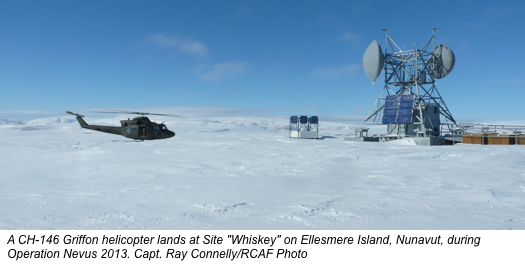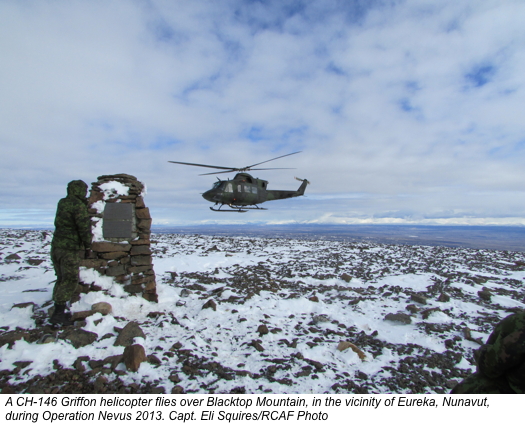Personnel posted in the bone-chilling reaches of Canadian Forces Station (CFS) Alert, on the northern tip of Ellesmere Island, Nunavut, are no stranger to harsh conditions and technological challenges. Indeed, one unique challenge involves the transmission of voice, video, and data communications to-and-from the Station.
This type of modern communication is commonplace in most parts of the world thanks to satellites positioned over the equator. But at the poles, the transmission angle is too extreme; therefore, the data must be sent south using other means to a location where it can be more accessible via satellite link.
To achieve this, data is sent from CFS Alert via a series of microwave repeater stations that span 400 kilometers to a communication station in Fort Eureka, a research station on the west coast of Ellesmere Island, where it is within range to establish a satellite connection to Ottawa, Ontario.
The communication system from CFS Alert to Fort Eureka is known as the High Arctic Data Communication System or HADCS (pronounced ‘haddicks’). This is how CFS Alert communicates with the rest of the world and vice versa.
Besieged by austere conditions for much of the year, the HADCS requires regular upkeep. This is the purpose of Operation Nevus, which is conducted every year from late May to late July by Canadian Armed Forces to perform essential preventive and corrective maintenance on the HADCS.
Under the command of Joint Task Force (North) in Yellowknife, Northwest Territories, Task Force Nevus consists of a technical element, responsible for maintenance and support activities, and an air element, responsible for airlift and support activities.
During the operation, a team of linemen, communications technicians, engineers and various civilian employees travel by CH-146 Griffon helicopters to visit each HADCS site to maintain the equipment and critical infrastructure, replacing components where necessary. Working in partnership with employees of Environment Canada, they also ensure that the entire system complies with environmental standards.
This year, 438 Tactical Helicopter Squadron from 1 Wing Kingston, Ontario, and based out of St. Hubert, Quebec, is providing the helicopter support; 440 Transport Squadron from 17 Wing Winnipeg, Man., based out of Yellowknife, Northwest Territories, is providing the cargo, passenger, and fuel cache support between CFS Alert and Eureka.
One of the numerous northern operations that Canadian Armed Forces conduct every year, Operation Nevus 2013 is ongoing until the end of July, and is an essential part of make this northern information highway a success.
OCdt Parker is the station logistics officer at Canadian Forces Station Alert.



